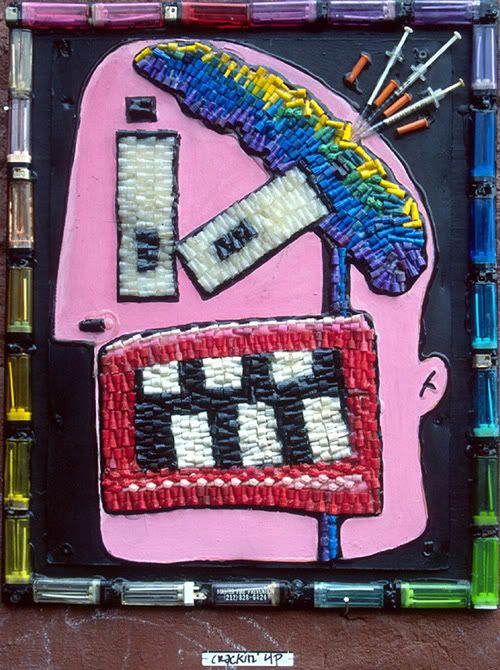
Cracking Up (1996)
This I made from cardboard glued to wood. I then gessoed the two and glued crack vial stoppers, hypodermic syringes and lighters to it. All in all, the street value of the crack is about $5000.
This next work, Hands On, 1997, was a result of all of the collection notices, bills, tickets, summonses and other paper detritus that I received due to financial hardship. I then glued all of that to a canvas and painted 11th C. Japanese mudras in a rotating square pattern. In the center is a buddha--Amitabyha--the Buddha of the Pure Land.
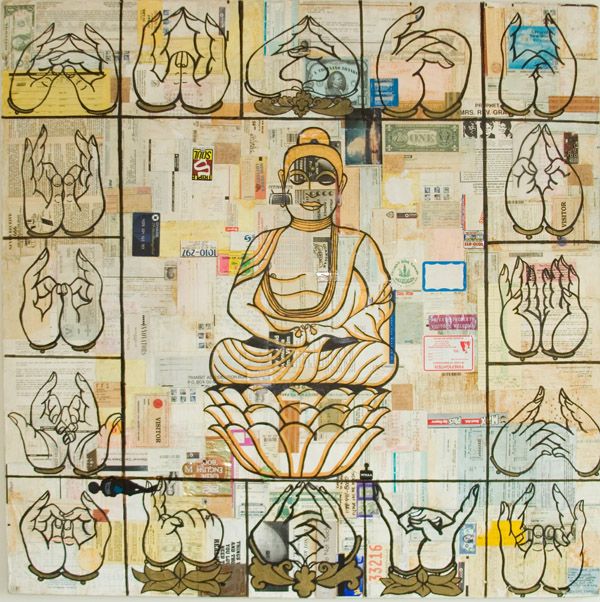
Amitabhya lives in a state of bliss that is just shy of Samdhi (enlightenment), but through Art, creates a plane from which Enlightenment is achievable. Art became this plane for me and this is how I dealt with my pain during those years, by transforming it into something positive!
I began to used elements from the subway, like signs and Metrocards...
Wet Paint, 1998
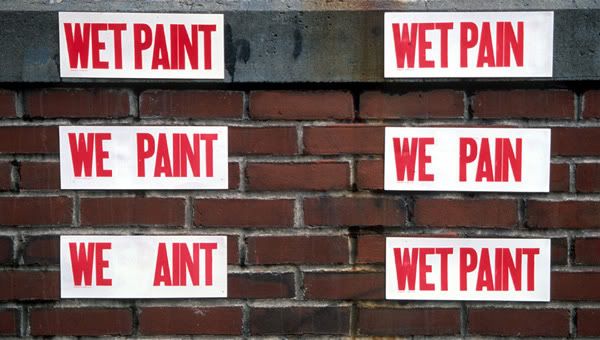
Train of Thought, 1999
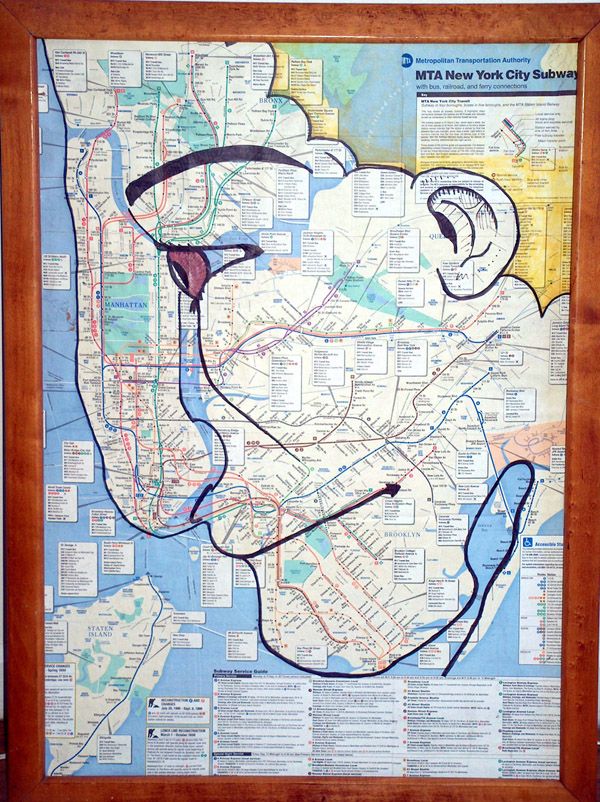
Craftsman, 2000
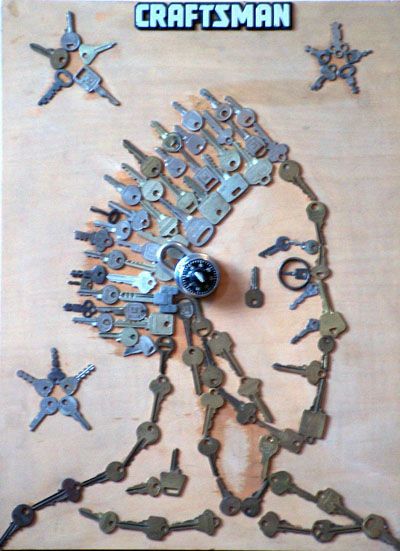
and combined them in ways which were meaningful to me. I had the fortune of meeting up with James de la Vega--who shared similar sentiment--and in 2002, we collaborated on a few projects about Harlem.
De La Vega's Art Show, 103rd and Lexington Ave., (2002)
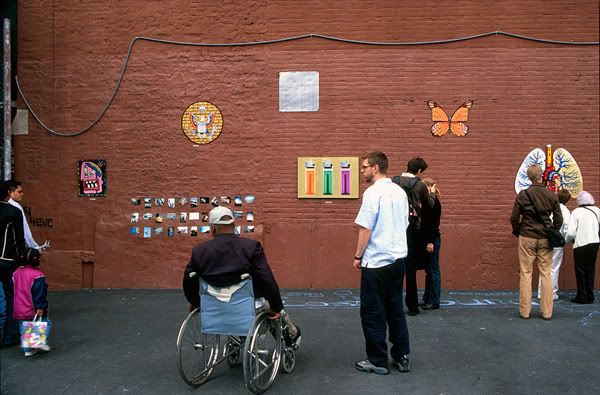
I also began using IDs, credit cards, phone cards and and other forms of electronic commerce mechanisms including packaging.
Yellow Jacket, Metrocards, glue. (2000)

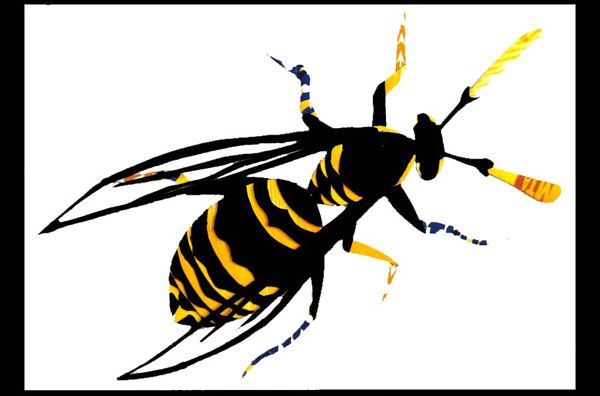
Organ Donor, 2002

Fenex, 2001
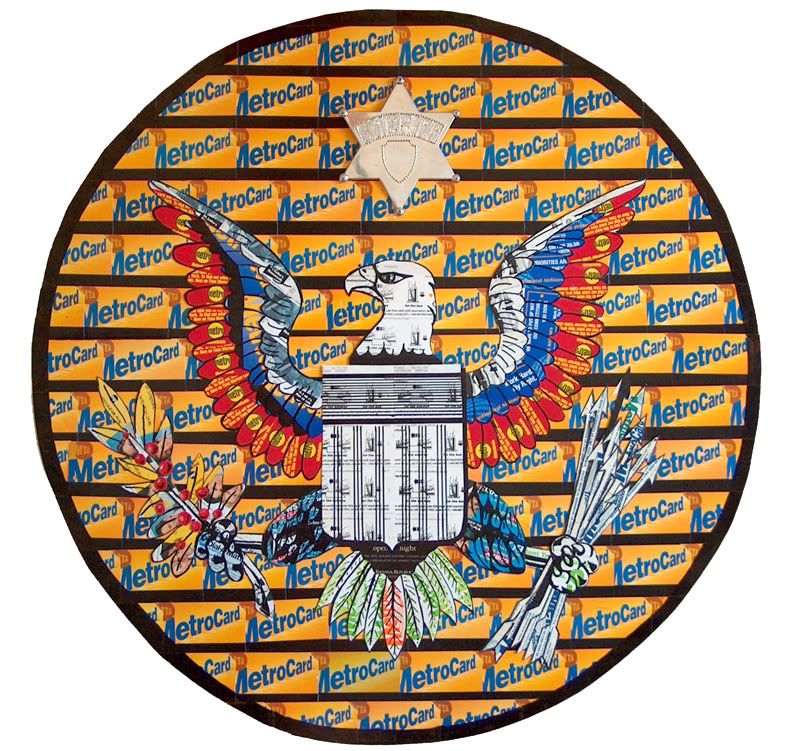
NYMonarch, 2002
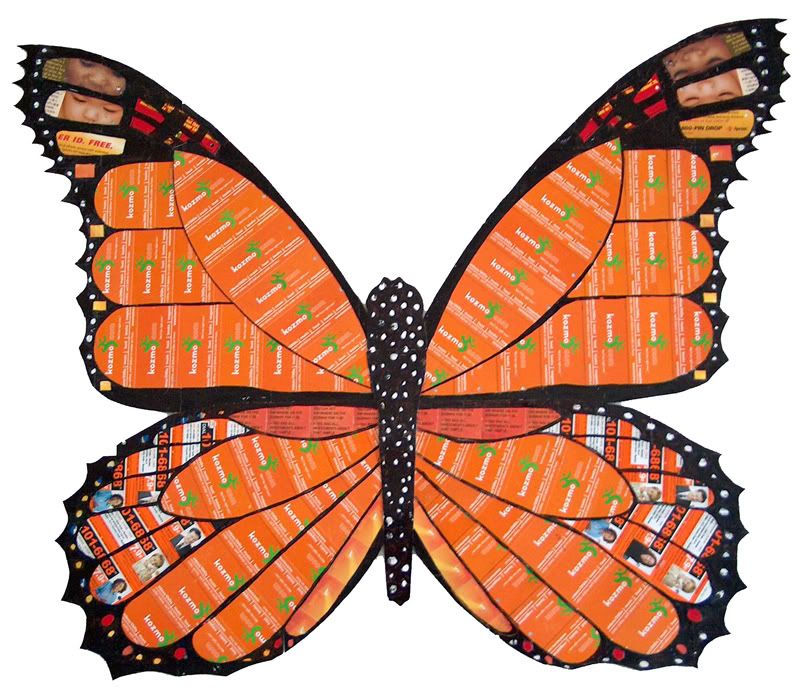
Eavesdrop (2003)
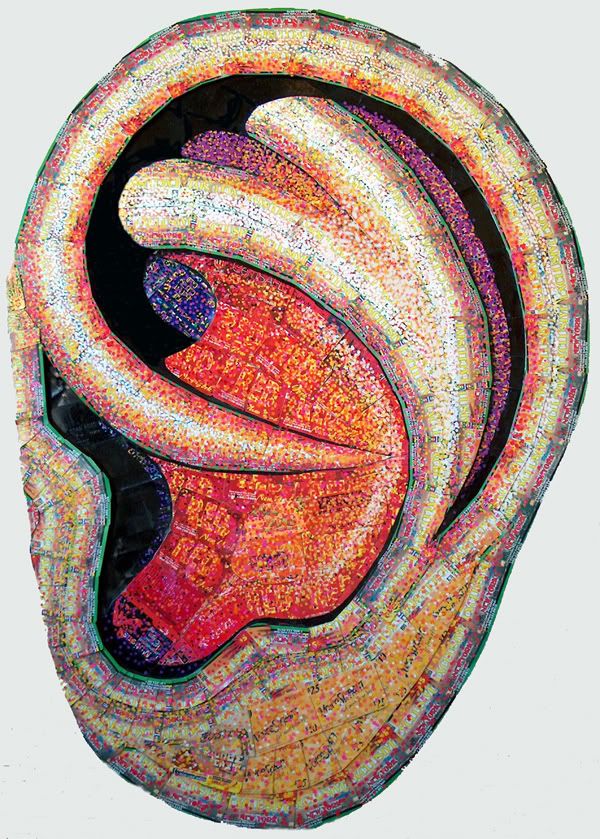
False Profit, 2003
US currency, magazines, advertisements, packaging on gessoed cardboard.
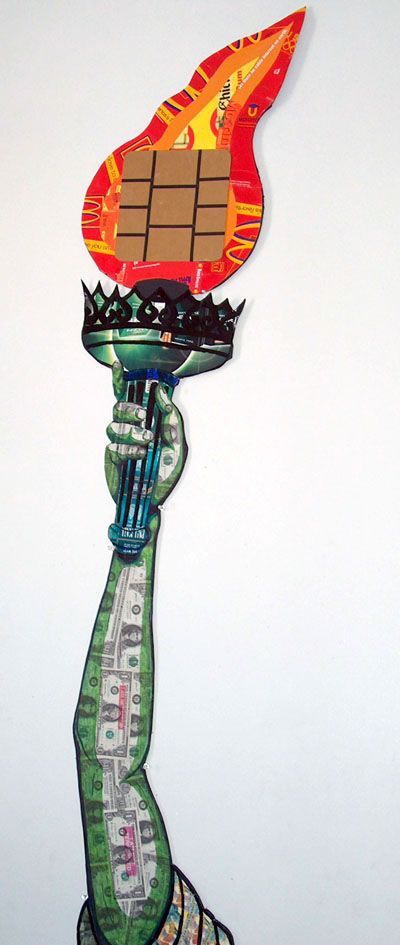
Queztalcoatl, (in progress)
phonecards on gessoed foam core.

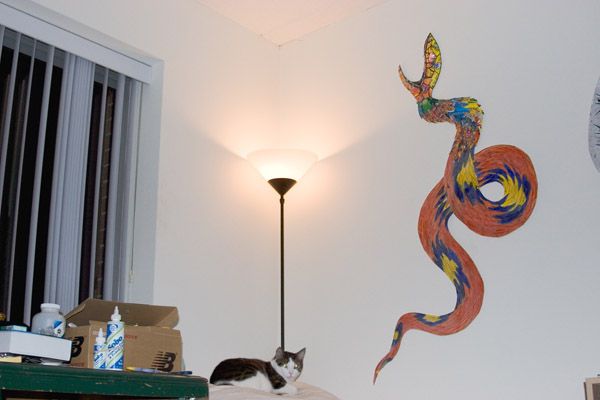
No comments:
Post a Comment